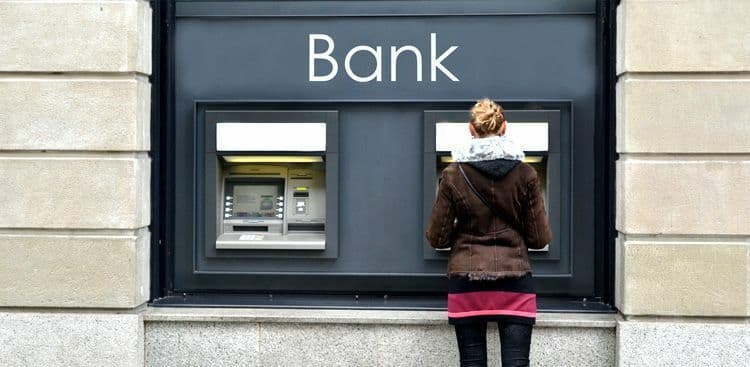This article is from our friends at LearnVest, a leading site for personal finance.
Spring cleaning is simultaneously awesome and awful, isn’t it?
You probably have to give up time you’d far rather be spending outside, where it’s finally sunny. Yet there are few things better than that amazing, fresh-start feeling you get from blowing the dust off everything.
Guess what? The same can be true when it comes to your money.
Just like how now can be the perfect time to clean out your closets, it’s also an ideal time to consider organizing, simplifying, and helping set yourself up for months of financial success.
To save you time, we asked financial advisers around the country for their best advice on how to spring clean your finances. Consider trying these tactics to do a quick spruce-up.
1. Create an ICE Folder
If you’re the money manager of your household, you owe it to the people you love to put together a folder of information that will help them figure out how to handle your finances in case anything happens to you. This is your “In Case of Emergency,” or ICE, folder.
“Include all of the info someone would need to manage your finances, such as your account numbers, login IDs and passwords, a list of bills you pay each month, investment and retirement fund info, and anything else that would need to be handled in your absence,” says Tyler Gray, a financial adviser with SageOak Financial in Tulsa, OK. This can be a literal folder or a folder on the desktop of your computer. If you go for the more high-tech option, make sure to rename the folder something innocuous (perhaps not, “All Financial Documents Here,” for security reasons), and fill your partner in on the folder’s alias.
If your partner or someone else handles your finances, ask that person to create an ICE folder for you. Morbid? Maybe a little, but this step could make life a lot easier in the event of an emergency.
2. Break Out the Highlighters
Jeff Motske, CFP, president and CEO of Trilogy Financial Services in Huntington Beach, CA, says spring is a great time to take a closer look at your budget—and one way to do it is to go old school.
“Get your credit card statements from the past six months and three different color highlighters,” suggests Motske. “Then, use one color to highlight your necessary costs (utility bills, insurance, groceries, toiletries), another to highlight items you bought because you really wanted them (your Netflix subscription or the new vacuum cleaner that’s easing your allergy symptoms), and another to highlight less thoughtful purchases (that round of drinks you bought at happy hour).”
“This exercise is usually eye-popping. Most people don’t realize how much they’re spending on stuff they really don’t need or want,” he says.
After highlighting your “problem areas,” take them high-tech by connecting your accounts to the LearnVest Money Center. Once it’s set up, tuck those highlighters in a drawer—the Money Center’s Inbox, which looks a lot like your email inbox, will import all of your spending and saving data to help you track your progress. You can even categorize what you spend into folders like “Groceries,” “Travel,” or “Pet Supplies,” then set budgets for each folder and get an automatic update on how much money you have left to spend. Come next spring, you’ll have a record of the year’s spending and can even see how your spending has “trended” over time.
3. Make it Automatic
If you haven’t made your savings contributions automatic by now, you’re behind the curve. “Harnessing the power of this free hack will make your life easier,” says Stacy Johnson, CPA, and author of Life or Debt.
“Have money taken out of every paycheck for savings before you see it. Then, automate your bill-paying: You should always review your bills, but paying at least some of them automatically not only streamlines the process, but ensures your payments are on time.” To help avoid account-draining bill surprises, stick with automating only recurring payments that are the same every month, like your rent or insurance—not your credit card.
For guidance on setting up automatic deposits, see our guide to building up savings. If you already have automatic deposits set up for your emergency fund and retirement accounts, nice work! Now consider increasing your contributions.
4. Go Paperless
You know that amazing feeling when you get rid of clothes you haven’t worn in two years? Well, according to Johnson, getting rid of that filing cabinet filled with old bills and credit card statements can feel just as freeing. “The single best piece of advice I give my clients is to go paperless,” says Johnson. “Scanning your important documents allows you to find them quickly, protects them from loss, and makes your home less cluttered.”
Of course, you shouldn’t just start tossing. Our general rule is to hang onto tax records for seven years, and it might be easiest to keep the hard copies of those. But everything else—including bank and credit card statements, as well as pay stubs—can be scanned and stored in a cloud-based filing provider, such as Dropbox or Google Drive.
5. Review Your Beneficiaries
Spring can be a great time of year to take a look at the people you’ve designated to receive your money in case something happens to you, says Kimberly Foss, a CFP in Roseville, CA. “Just like wills, retirement accounts have beneficiaries, so it’s important to ensure your assets will go to the right people,” she explains.
Any account with a substantial amount of money, be it retirement, checking, savings, or investment, should have a designated beneficiary. It’s usually as simple as calling your bank and asking for a form to fill out (sometimes you can even do it online). Your beneficiary is the person who will receive your assets, so be sure to review these forms after a major life event like a marriage, death or birth of a child. And make sure you designate someone—should something happen to you, assets without a beneficiary run the risk of going into expensive, time-consuming probate court.
6. Create Your Own Financial Calendar
Let’s face it: It’s too easy to ignore financial tasks right up until the last minute. (Hello, tax prep!) That’s why now is a great time to create your “financial calendar.”
It’s simple: “Set reminders throughout the year to do things like review insurance policies, get a credit report, or rebalance investments,” explains Gray. “Mine is in a Google calendar.” Not sure what needs doing, or when? Consult our Ultimate 2014 Financial Calendar, which outlines the tasks you should complete each month, along with resources to help you finish them. Then, add your personal due dates and tasks, like “Increase retirement contributions,” or “Make final debt payment (celebrate!).”

